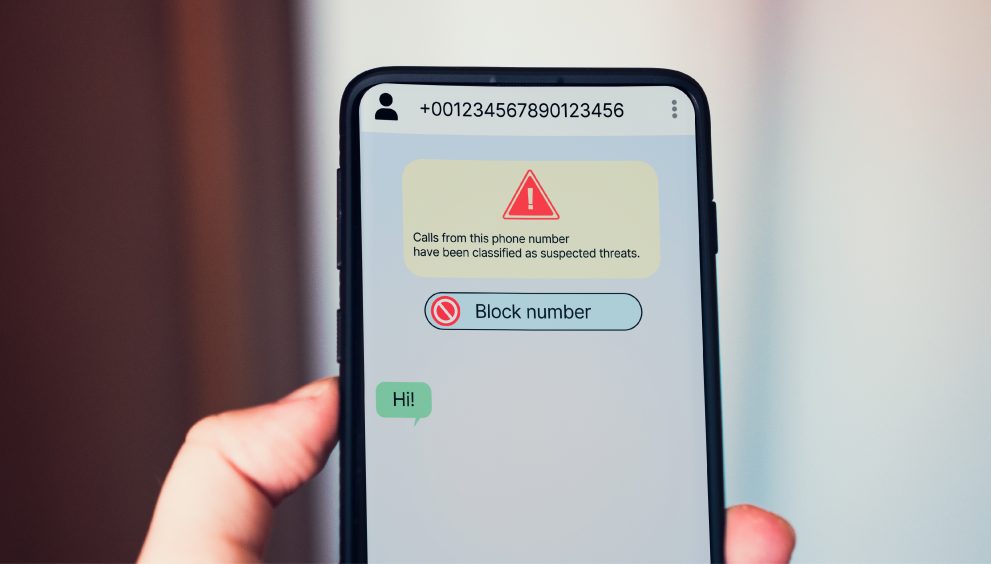So it’s no surprise that even something as routine as getting an OTP (One Time Password) message can be a jump point for fraud these days. A decade ago, malware and viruses were the leading threats, usually causing data to be corrupted or the computer to become slow. But in the past decade or so, fraud has gone social, relying on SMS, voice calls and emails to deceive users.
Over 3.4 billion phishing emails are sent in twenty hours. What’s even more shocking is that these scams are no longer aimed solely at tech novices, they can prey upon anyone, from teenagers ordering food online to retirees looking up pension updates.
Understanding how fake OTP messages work and having a clue about the anatomy of an OTP scam is not something reserved for tech nerds; it’s a must-have knowledge for every smartphone user. And much like learning about famous computer viruses such as “ILOVEYOU” or “WannaCry” helped us grasp how harmful code can be, understanding the strategies of today’s fraudsters can help us harden ourselves against them in a digital battlefield.
Why You Are Getting Fake Messages?
Fake messages flood your phone for a simple reason: cybercriminals are fishing for your credentials. Your mobile number might’ve been leaked from a data breach, sold on the dark web, or even randomly guessed using automated software. Scammers use these fake messages to harvest sensitive information, trigger phishing sites, or even implant spyware on your device.
Why You Receive Fake Messages
- Your phone number may be leaked or purchased on the dark web
- Bots can randomly generate and send mass messages
- Clicking on a fake OTP can open a phishing link or initiate a virus download
- They are part of a larger network of OTP frauds
Identifying Fake OTP Messages
Spotting a fake OTP message can be challenging, especially when it mimics genuine banking or service provider formats. Scammers often use similar fonts, branded logos, and structured messages to make them look authentic.
How to Spot a Fake OTP
- Sender name is random or misspelled (like AMZON instead of AMAZON)
- OTP is requested for a service you didn’t initiate
- Contains shortened links (bit.ly, tinyurl, etc.)
- Urgent or threatening language like “Your account will be blocked!”
- Request for OTP entry outside the platform (via call or external app)
Examples of Fake OTP SMS Scams
“Your Amazon account will be suspended. Please verify your login by entering OTP: 792011. Click here: bit.ly/verify-amz”
“Dear user, we’ve detected unusual activity in your account. Share OTP 338921 with our support team to keep your services active.”
“Congratulations! You’ve won a free iPhone. To claim, confirm OTP 442901 now. T&C apply.”
These examples show how fake OTP messages prey on fear, urgency, or excitement. Recognizing these red flags is crucial to staying protected.
Risks of Responding to Fake OTPs
Responding to or engaging with fake sms messages is dangerous and can have long-term consequences.
What Can Go Wrong
- Identity theft: Your Aadhaar, PAN, or banking details can be stolen
- Financial loss: You might unknowingly authorize payments
- Device compromise: Clicking a link could install spyware
- Account lockout: Hackers can change your passwords and lock you out
By reacting to a fake OTP message, you may be giving scammers the exact credentials or code they need to take control of your accounts.
How to Verify If an OTP Message Is Genuine
Thankfully, verifying an OTP’s authenticity isn’t rocket science. You just need to be alert and systematic.
Verifying a Genuine OTP
- Check context: Did you initiate an action like login or transaction?
- Check sender ID: Trusted sources have verified SMS headers
- Use app alerts: Most apps (banks, UPI) send in-app alerts along with OTPs
- Never share OTP verbally or via call
If in doubt, directly log in to the app or website to see if your action triggered an OTP. Never rely solely on SMS information.
How to Stop Unwanted OTP Messages and Spam
While you can’t completely block scam attempts, you can reduce their frequency significantly.
How to Stop Spam OTPs
- Enable DND (Do Not Disturb). Register via TRAI’s website or your telecom operator
- Use an antivirus solution. Many security apps block malicious messages
- Avoid giving your number on unsecured websites
- Unsubscribe from unnecessary newsletters or apps
Protective digital hygiene is the first step in fighting back against OTP scam attempts.
Tools and Apps to Verify OTP Messages
Thankfully, technology has evolved to fight back. Several tools now allow you to verify and filter OTPs and scam messages.
Recommended Tools
- Quick Heal Antifraud: Includes advanced antifraud tools
- Truecaller: Detects fake SMS senders
- Quick Heal Total Security: Best overall protection
Such tools often detect and mark fake OTP messages automatically, giving you that extra layer of reassurance.
How Does Quick Heal Combat Fake OTP Messages?
Quick Heal uses a multi-layered defense strategy built specifically for mobile scams and fraudulent messages. Their technology identifies, blocks, and alerts users about potential OTP frauds, fake calls, and even fraudulent apps.
Quick Heal Antifraud
Quick Heal’s Antifraud module focuses on protecting you from social engineering attacks that use fake OTPs.
Key Features:
- Risk Profile: Gives you a detailed overview of your fraud exposure
- Banking Fraud Alert: Warns you of scam calls pretending to be from banks
- Fraud Protect Buddy: Extend protection to elderly or less tech-savvy relatives
- Fraud Call Alert: Real-time alerts for suspicious numbers
- Unauthorized Access Alert: Detects apps using your mic or cam silently
- Payee Name Announcer: Confirms the receiver’s name during QR or UPI payments
- Call Forwarding Alert: Warns you if someone has redirected your calls
- Fraud App Detector: Flags malicious apps that may be disguised as legitimate
Quick Heal Total Security
Quick Heal Total Security goes a step further by including firewall protection, secure browsing, anti-keylogging, and cloud-based malware scanning. It is a comprehensive antivirus solution that shields not just from viruses, but also from phishing links, scam messages, and even stalkerware.
Frequently Asked Questions
-
How to detect fake SMS?
Check for urgent language, spelling mistakes, unexpected OTPs, or strange sender IDs. Verify the sender using Truecaller or a trusted anti-spam app.
-
How to report fake OTP messages?
Forward the message to 1909 (TRAI’s spam reporting number in India) or report it via the DND app. You can also report it to your bank or service provider.
-
Best tool to detect fake OTP messages?
Quick Heal Antifraud is one of the best options due to its dedicated antifraud engine. Quick Heal Total Security is a reliable option, too.



